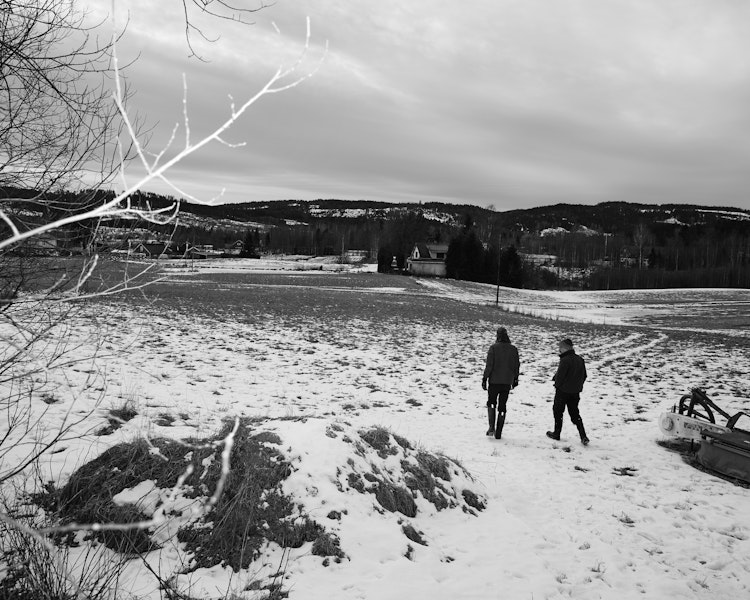

Ørjan Marakatt Bertelsen, Trygve Aune Tveita, Synne Sofi Bønes, David Torch, Ivar Kvaal
Arlyne Moi
Adam Curtis explores the pastoral lifestyles of designers Anne Karine Thorbjørnsen, Ramona Salo, Tone Elisabeth Bjerkaas, Siv Støldal, and Harald Lunde Helgesen and their decision to move away, while at the same time moving towards new ways of being and practicing.
I have worked with urban food systems issues for the past ten years, exploring the intersection of social design and sustainability of cities. During this time, I had often dreamed of having my own farm in the countryside, not so much because I disliked urban living, but rather, I wanted somewhere in which to be grounded - to plant trees and watch them grow for the next thirty years. Surprisingly, it didn’t take much convincing to get my partner, the fashion designer Harald Lunde Helgesen, onboard with the pastoral dream. We looked at small farms in Norway for about a year before finally buying one in March of 2020, but it turns out Harald is not the only fashion designer to make a move out of the city.
Due to the pandemic over the past two years, Harald and I have been able to spend lots of time at our farm in Brødbøl, nestled in Finnskogen on the Swedish border. We have kept a flat in Oslo as well, getting the best of both the urban and rural. However, I have recently begun to question the cost-benefit balance of urban living, as heavily influenced by my time in the countryside. Specifically, as I currently work in research around urban food security and social challenges, I worry that the massive amount of capital that has been poured into the global economy since the 2007 financial crisis has made cities unliveable. Soaring prices have pushed makers and entrepreneurs further out of city centres. Profit-driven development built with little attention to liveability will haunt our cities for decades to come. In contrast, the freedom and opportunities of country living are certainly creating a significant cultural moment for attention beyond the urban.
Over the past two years of lockdown-life on our farm, I have come to appreciate the abundance of space – giving me space to move, think and imagine. Being close to nature has changed my priorities significantly, as I have spent many an afternoon mushroom picking in the forest we own, forming a deep connection with the trees and rocks I have grown to know deeply. The lifestyle has also provided opportunity to explore my own heritage, connect with neighbours very different from myself and cherish better the relationships I have with those across distance.
Harald and I grow lots of food and flowers on the farm each summer, practicing sustainable, slow agricultural methods. This focus on quality and methodology is part of a larger cultural focus that has gained momentum in recent years. The shift in values is not only seen in ‘slow food’ but also in other cultural arenas. Fashion in particular has also experienced this move towards attention on to the people involved, the importance of value over price, and awareness of its impact on the living world beyond the human.
Fashion is one of the most dynamic cultural expressions. Not only do all members of society actively play a part in the practice through buying and wearing of clothes, but also through, often unexpressed, critiques of what others are wearing. The contemporary fashion scene is still quite young within Norway, a nation with only a little over a hundred years of cultural and political independence. Perhaps part of the reason lies in the fact that urban living is a fairly new concept for the nation. Fashion is quite typically associated with the ‘urban’ as it is not only a cultural expression through design, but also of performance. However, a number of Norwegian fashion designers, makers, and artists working with clothing and textiles are living outside of urban areas, in non-traditional places for fashion expression. It is from these places that these individuals are now producing Norwegian culture in new modes and with new routes of influence.
The fashion industry has changed significantly in recent years. My partner, Harald Lunde Helgesen, himself a designer born and raised in Oslo, attributes significant changes to the 2007 financial crisis. He tells of how, when he was coming into the industry, the traditional modes of becoming known and successful were beginning to dry up with the loss of expendable income in post-crash Europe. Harald experienced the closure of the multi-brand concept stores, and with them, diminishing opportunities for smaller designers to find their way. The rise of the Internet further decentralised typical modes of success, putting power into the hands of algorithms and influencers. Harald notes that the fast fashion industry was driving prices lower, altering society’s understanding of what clothing should cost – making it harder for smaller brands to sell their goods for prices that would be fair to the producers and designers. It is in this post-crash world that Harald, along with four other designers interviewed here, have been practicing for the past decade and a half. Their more recent decisions to move their lives to non-urban areas further underscores how they are finding new forms of expression and inspiration.
Space as Freedom
For a maker, space can hold immense importance. Anne Karine Thorbjørnsen had practiced as a fashion designer with her own brand for eight years when she decided to make a drastic change in 2019. Having worked in both London and Oslo, Anne Karine had built quite a reputation as an expert in draping – sculpting shape and texture out of textiles in a way that incorporates the body as an essential element. Yet as her Oslo studio lease expired in 2019, she was already questioning a fashion system that demanded constant growth – growth that only resulted in longer working hours in her studio. Knowing that this system wasn’t going to change, she made a decision: ‘I have to change. I have to step out of it’. During this time, she happened to also fall in love with a carpenter from Elverum, a small town of 21,000 people. These factors contributed to her self-described organic decision to ultimately close her studio, move to a farm in Elverum, and rethink her practice entirely. She now lives in a large farmhouse by the Glomma River – a place that is ‘its own little world’. As Anne Karine puts it, ‘To have [an abundance of] physical space gives me space in my head to think better.’
Within this space, Anne Karine’s work has grown in scale - working much larger than she has ever before. She has moved her draping practice off of human bodies and onto steel rebar and concrete structures she has built with materials that were laying around the farm. She is currently planning a show of her fashion-sculptures outdoors along the Glomma River close to her farm - with a focus on the way that weather and nature change and impact the work. As her practice continues to change significantly with the space of her farm in Elverum, ‘suddenly there are no boundaries, which is difficult. I like that – it’s exciting! But it’s also scary.’ Anne Karine is also planning a sculpting workshop on the farm with her sister and brother-in-law, both of whom are architects – made possible by all the space and machinery she has available on the farm in Elverum. ‘I feel like I have way more opportunities here. [...] I bring my little pretty fashion textiles into the dirty workshops and then something comes out.’
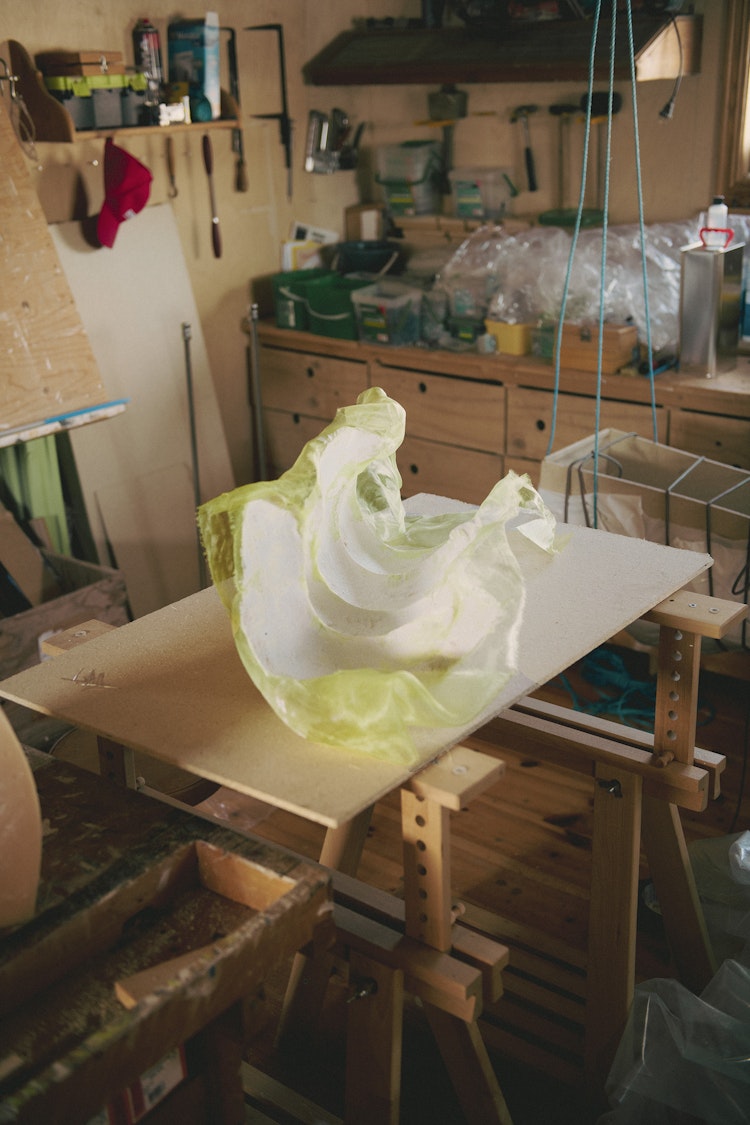
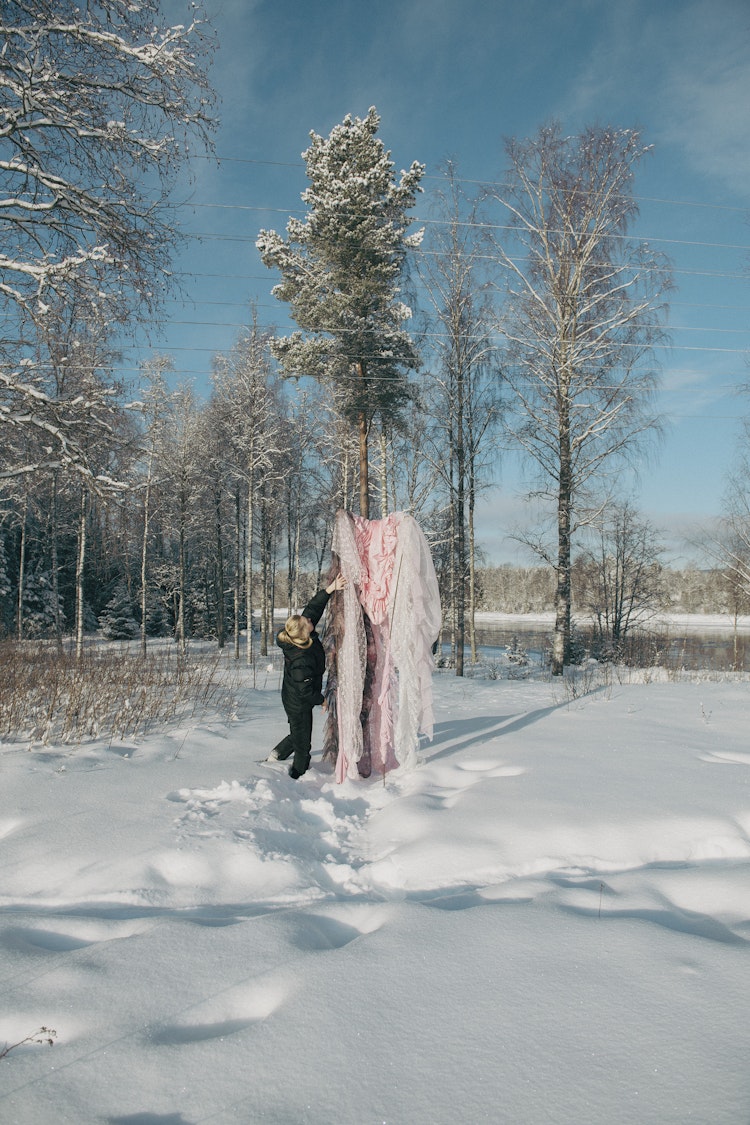
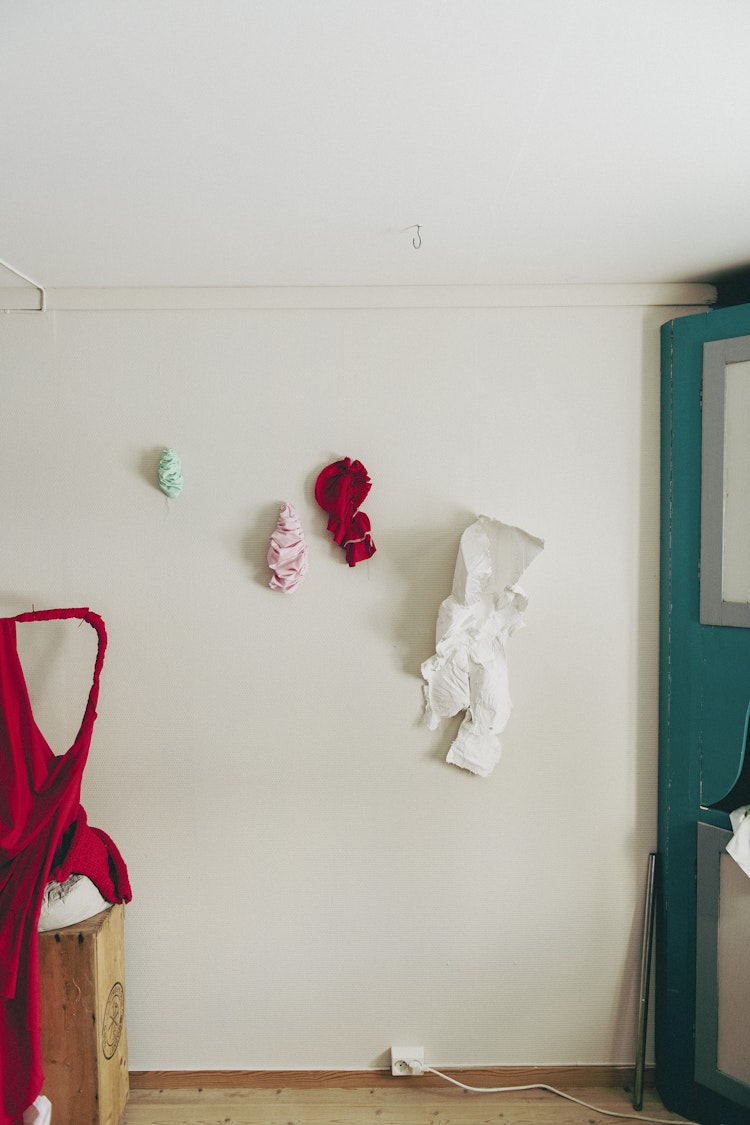
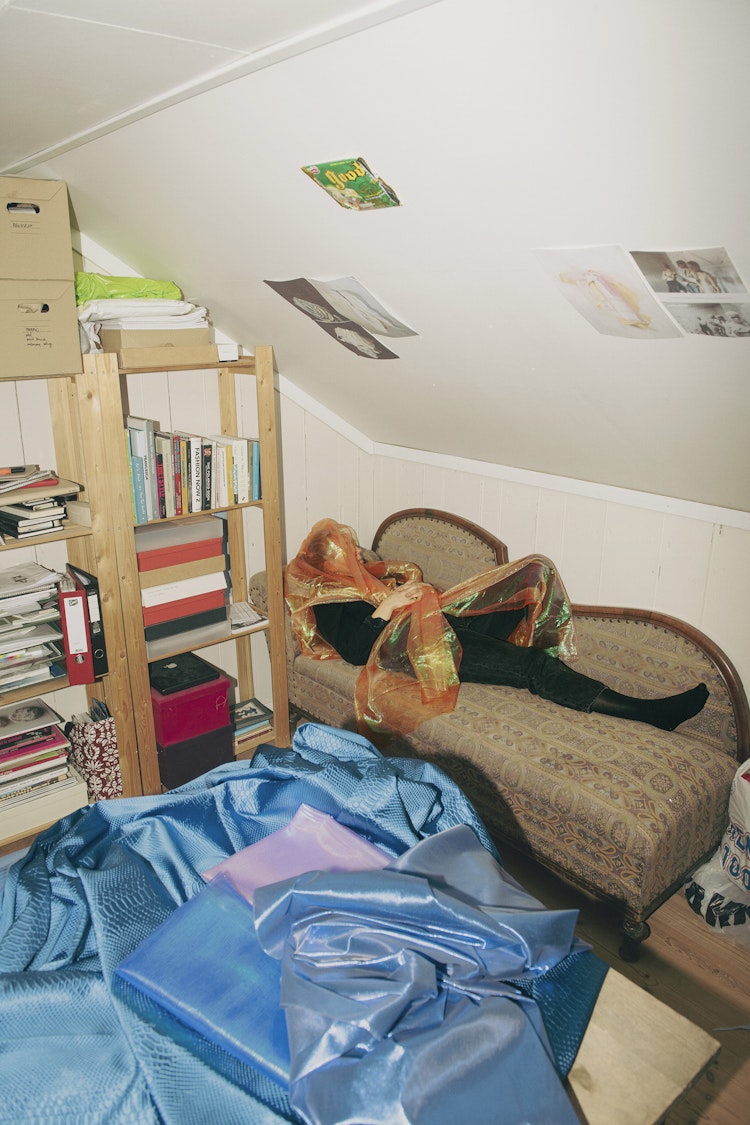
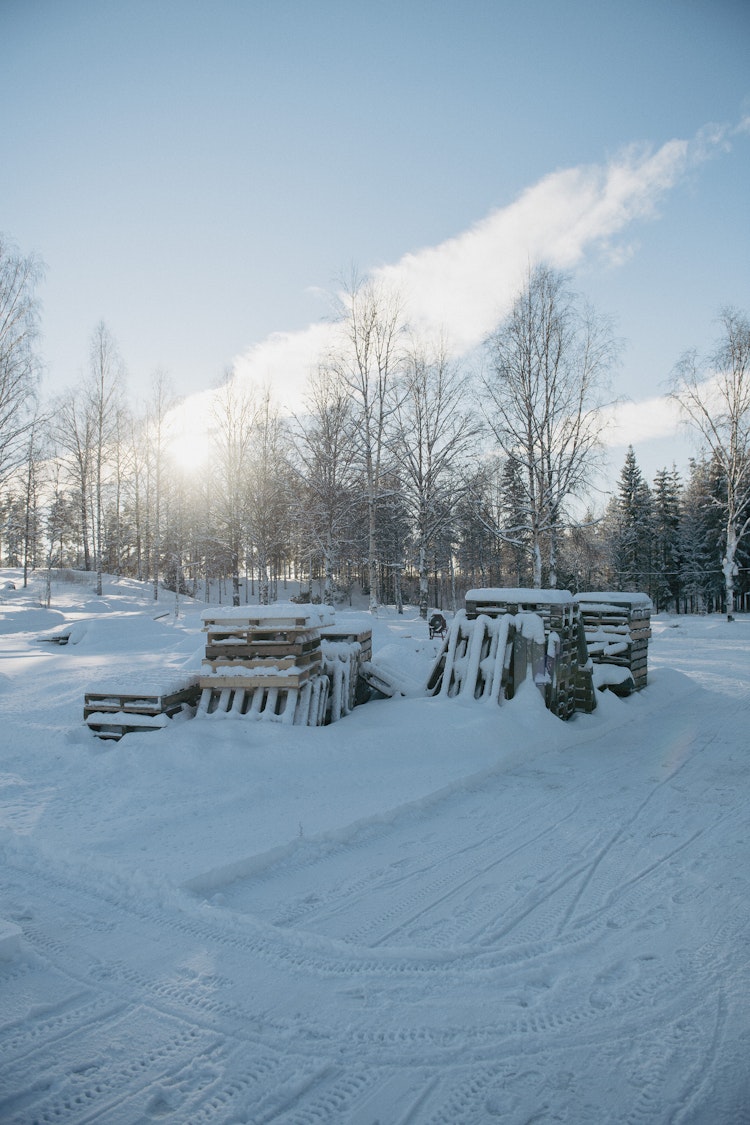
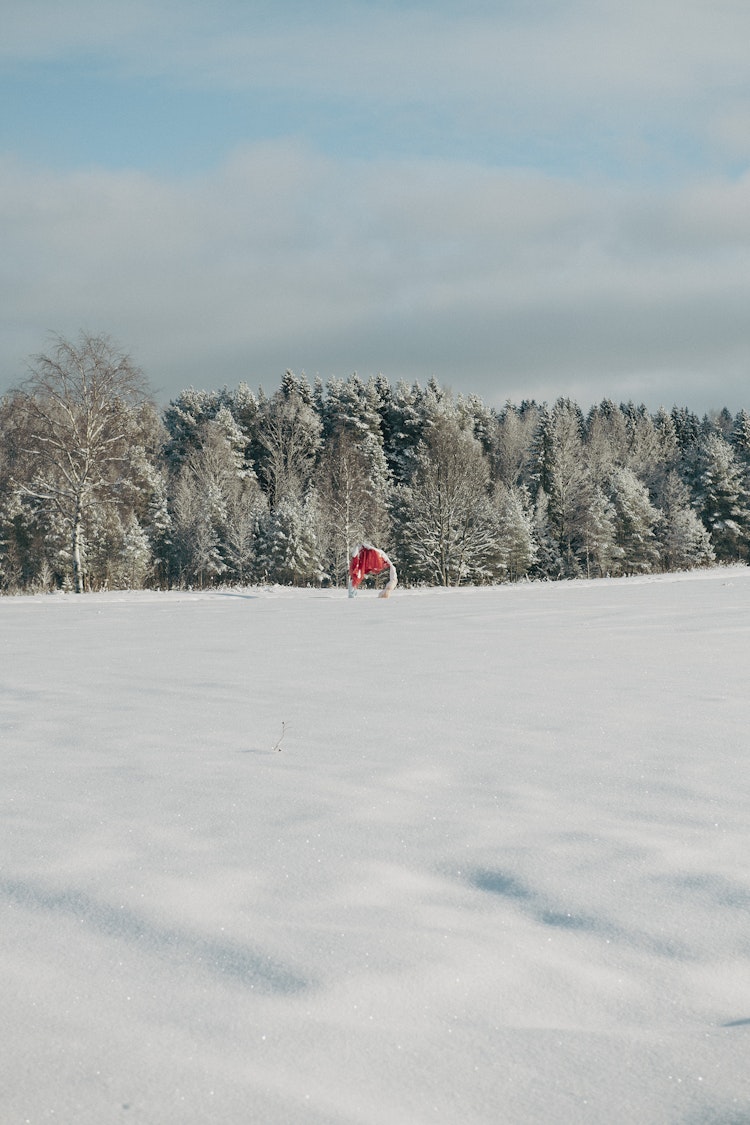
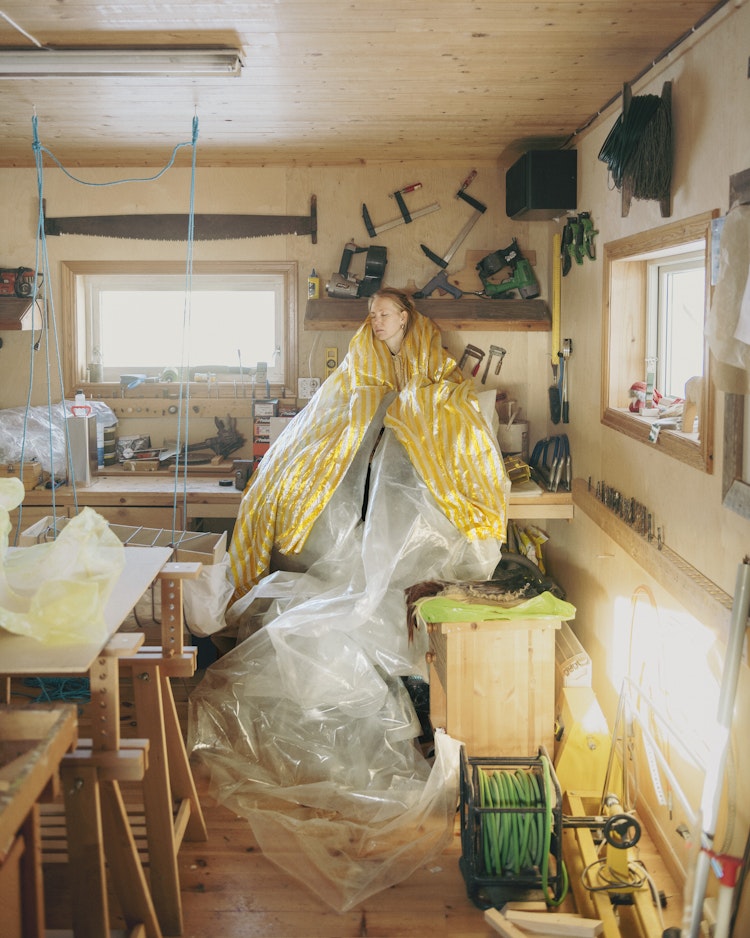
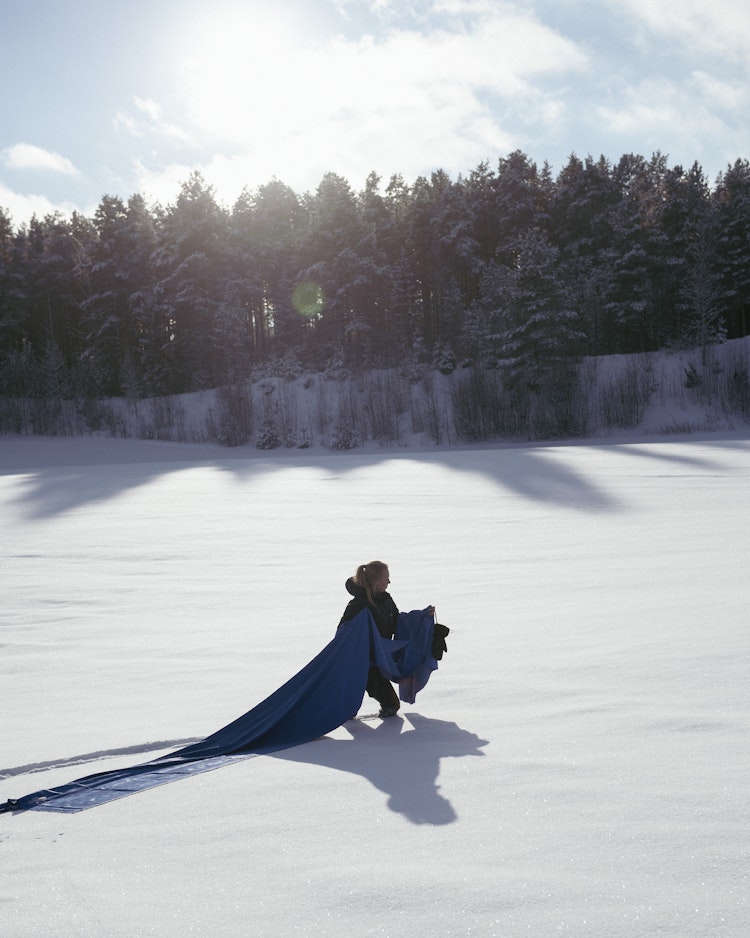
Changing Perspectives
Ramona Salo is a designer and textile artist who grew up in Gáivuotna on the Norwegian side of Sápmi. She moved to Oslo to study criminology, but eventually found she wanted to study fashion. She would excel at the Oslo National Academy of the Arts, taking several collections around the world and receiving multiple awards, including the 2018 DOGA Newcomer Award. She decided, however, to return to Gáivuotna to deepen her practice into her work around her own Sámi heritage. As landscape is a primary theme in Ramona’s work, being back in the landscape that inspired her ancestors is a setting that provides inspiration and energy, but also the time to reflect on such influences.
Time is a central aspect of fashion. The typical fashion system demands the output of two collections a year. Ramona echoes this feeling when speaking of her time in Oslo: ‘You don’t get the time to breathe or think, things go so fast.’ During her time in Oslo, Ramona worked almost every weekend at Oslo Airport to make ends meet. She describes having almost no social life due to how busy life was between work and her practice. The opportunity to move to Gáivuotna has provided her with a house that was in her family and a radical change of pace. Ramona is currently using the idea of time, specifically the idea of summer as a long, single day in her collection called Arctic Summer. This work is a reflection, two years in-the-making, on her upbringing above the Arctic Circle, where the changing daylight changes perceptions of time. This ability to take the time to dive deeply into her topics of inspiration and research is something that stands in contrast to the fast paced lifestyle she experienced in Oslo. She talks of the abundance of culture she has found in her community since moving back - ‘It just gets you dreaming’.

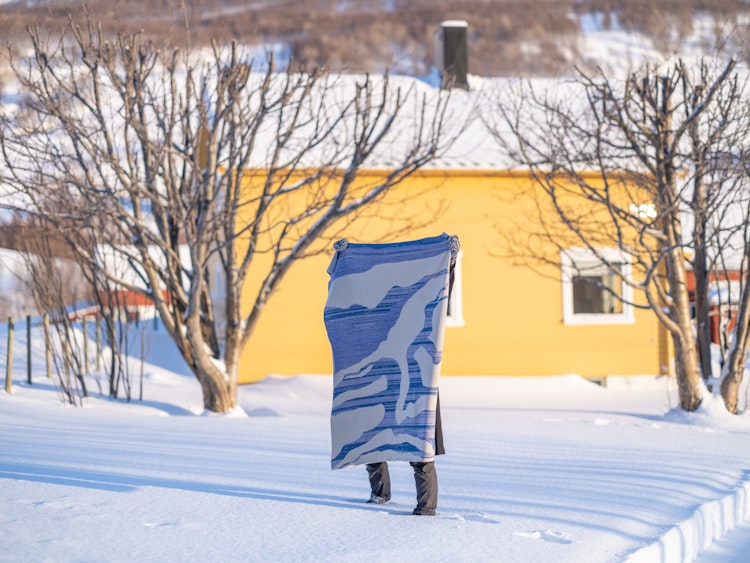
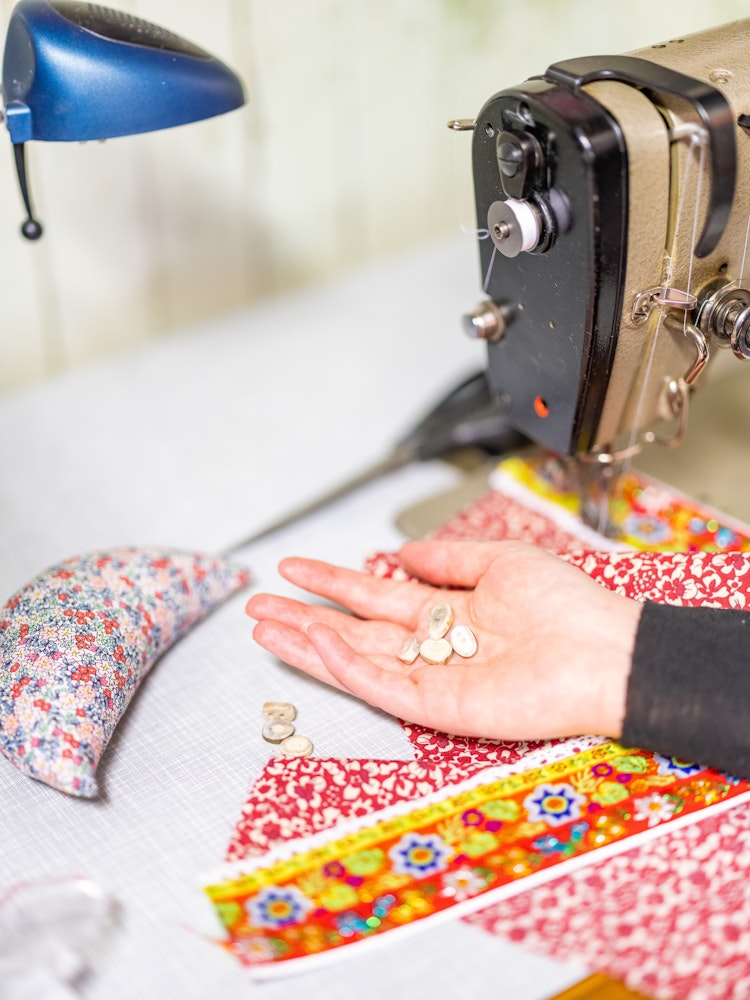
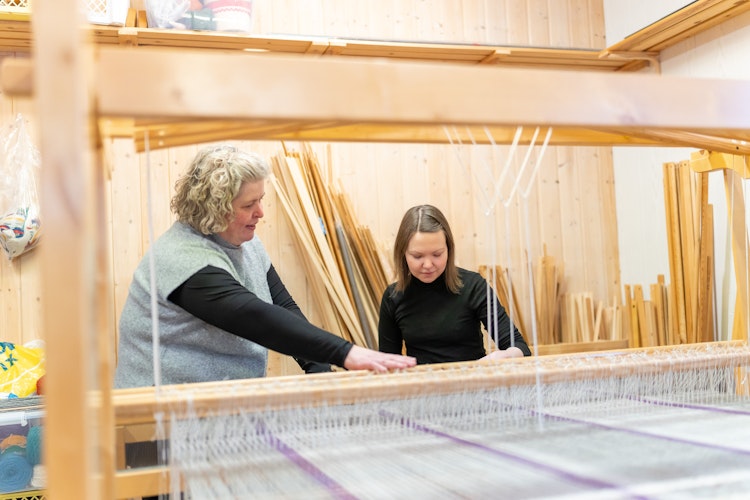
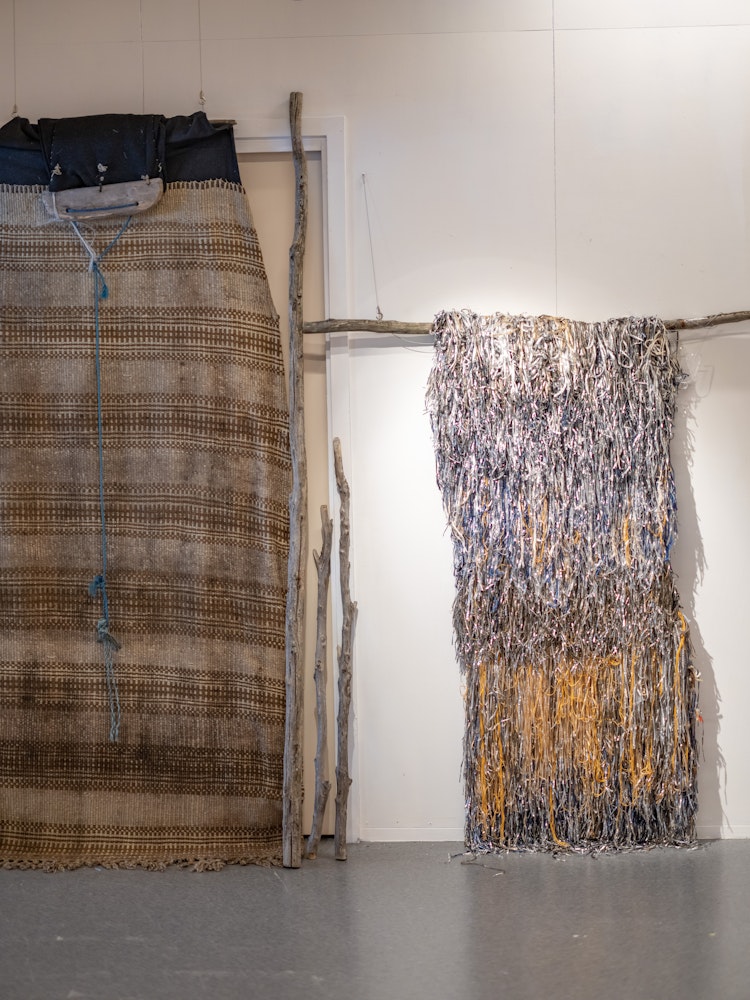
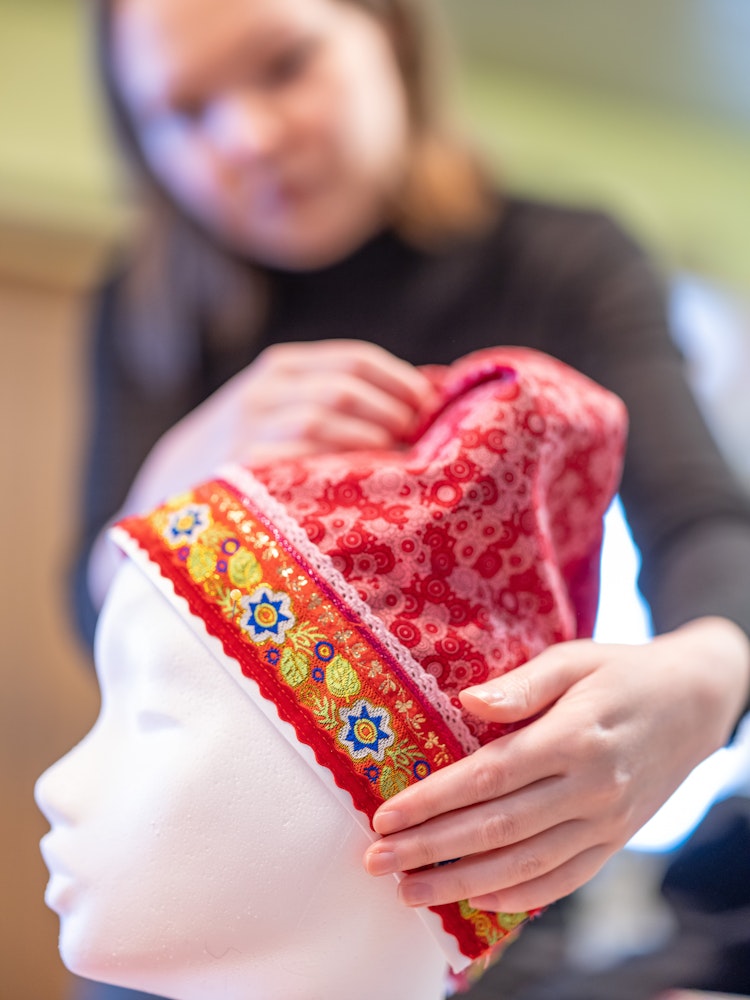
Living Heritage
Tone Elisabeth Bjerkaas refers to herself as a maker ‘with many different hats’. She grew up in Tromsø, also above the Arctic Circle, and her journey of studying fashion took her to Amsterdam then Oslo. It was shortly before starting her master’s degree in Oslo that Tone’s father passed away, leaving her with her grandparents’ farm on Dyrøya, a small island about a three-hour drive southwest from Tromsø. Tone decided to focus her attention on the farm, where she had spent parts of her childhood, as her master’s project, developing it into an idea – a place of exploring self-sustenance and taking ownership through her own expression.
Tone now lives during the winters in the city centre of Tromsø. Yet, she most looks forward to spending her summers on the farm. It is here that she finds both inspiration and a physical starting point in the material objects left behind by her family. Recently, she has used some of her grandmother’s old tablecloths to make clothing. She also has become quite infatuated with growing potatoes – which she sees as having ‘nothing to do with fashion, but has everything to do with design and making’. Tone’s dream is to turn the space into a collective, collaborative space, where she can share the inspiration, access to materials, memories of her family and harvest of the land. ‘When I’m there, I’m thinking about how my grandparents would feel about the people who are visiting or what we are doing, and I feel this kind of approval all the time – that they’re happy that I’m there. And they’re happy that I’m making this traditional food, or that I’m inviting people to make things there. [...] It feels good to do something that is in line with my family somehow.’
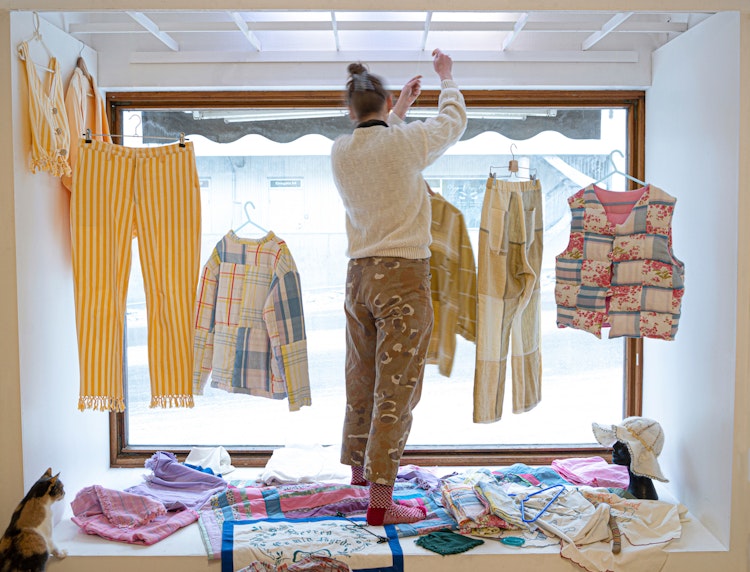
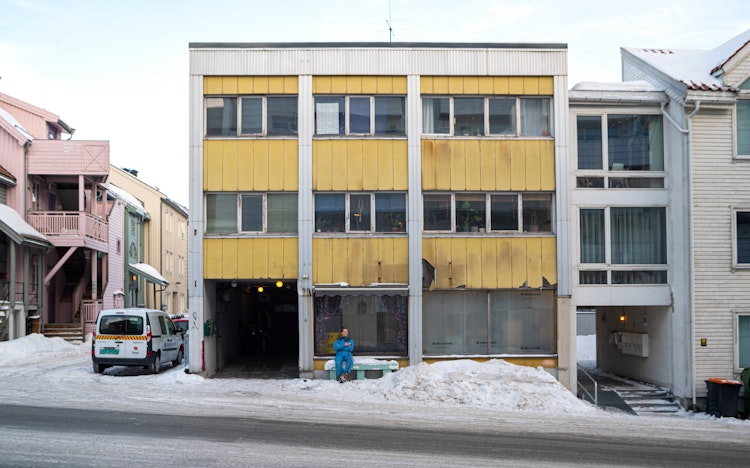
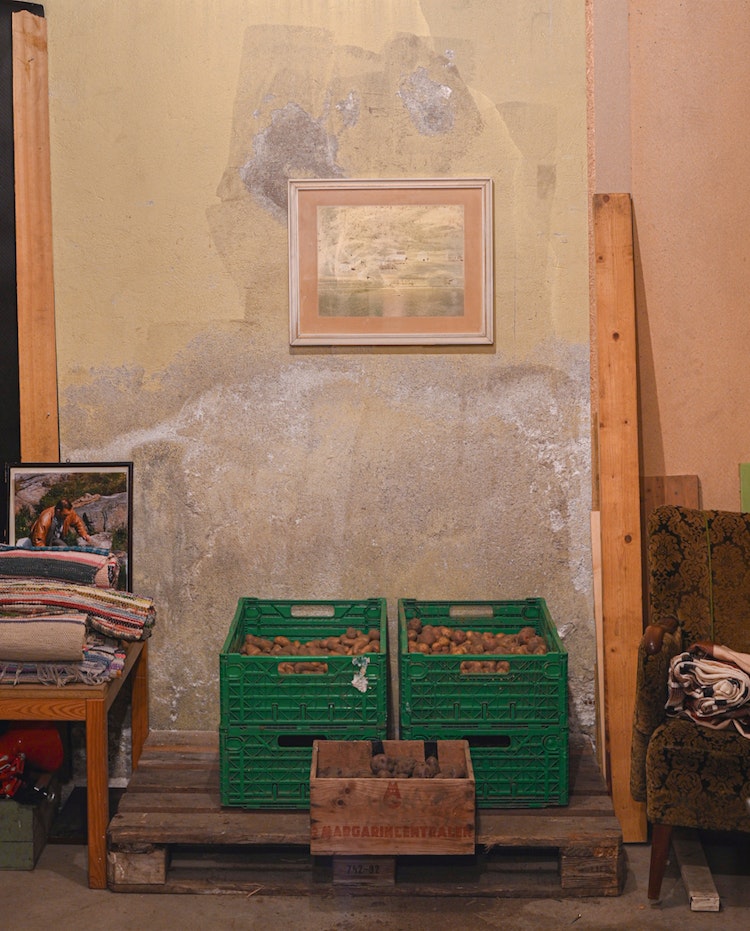
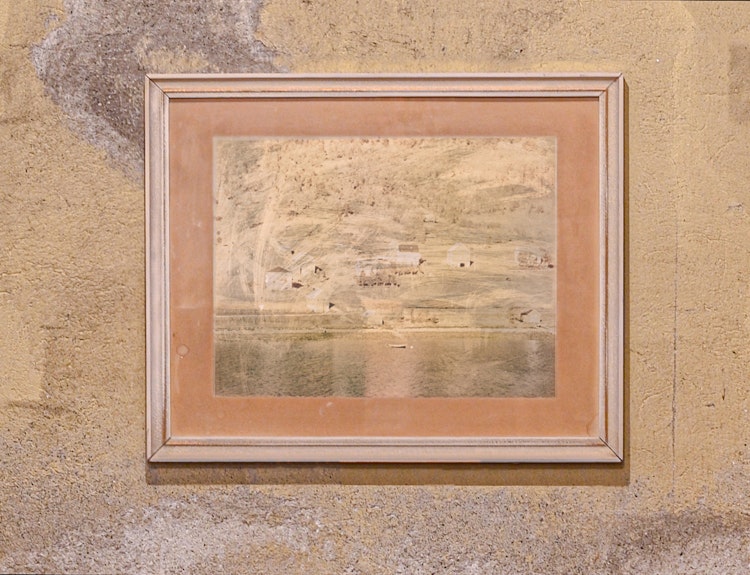
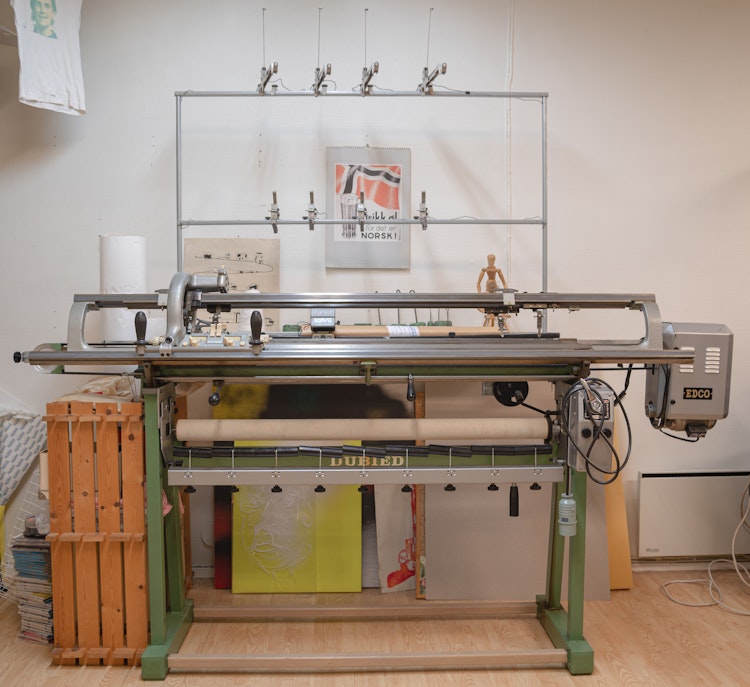
Building Connections
Siv Støldal grew up on Tyssøy, a small island on the west coast of Norway. Growing up, the only way onto or off the island was her father’s boat and at sixteen, Siv, who had been dreaming of city life, moved away. Siv transplanted to nearby Bergen to train as a menswear tailor and eventually made her way to London, where she had a successful practice and sold clothing for ten years. Siv, however, grew tired of the repetition of seasonal fashion shows and demands of sales and deliveries and, seeking a new perspective, moved her family back to Tyssøy, to a wooden house from 1860 that was in her family. The island now has about a hundred residents and a bridge connecting it to a neighbouring island that is then connected to the mainland. Her work since returning to Norway has focused on community and connections.
During her time in London, Siv’s work centred around the stories built into clothing from the perspective of individuals. When Siv returned to Norway, however, she shifted her focus wider towards community, nature and connections. She began work on a project called Flettverk, in which she worked with craftspeople in rural areas along the west coast to develop products connected to place. Siv has also joined a group of architects and design companies to start the Bioregion Institute and BiodesignLab which is a space focused on developing sustainable and biodegradable materials. More recently, she has helped set up a studio/co-working/gallery and project space in Bergen called Kiosken. Within this space, Siv brings together artists and designers to create unique collaborations and inspirational meeting points. Her current practice is centred around exploring and enhancing connections people hold to their clothing through collecting stories and sewing made-to-size clothing. Siv is currently finding great inspiration hearing often from customers about the connections they have made with her clothing over time, connections that build stories, value and confirmation to continue.
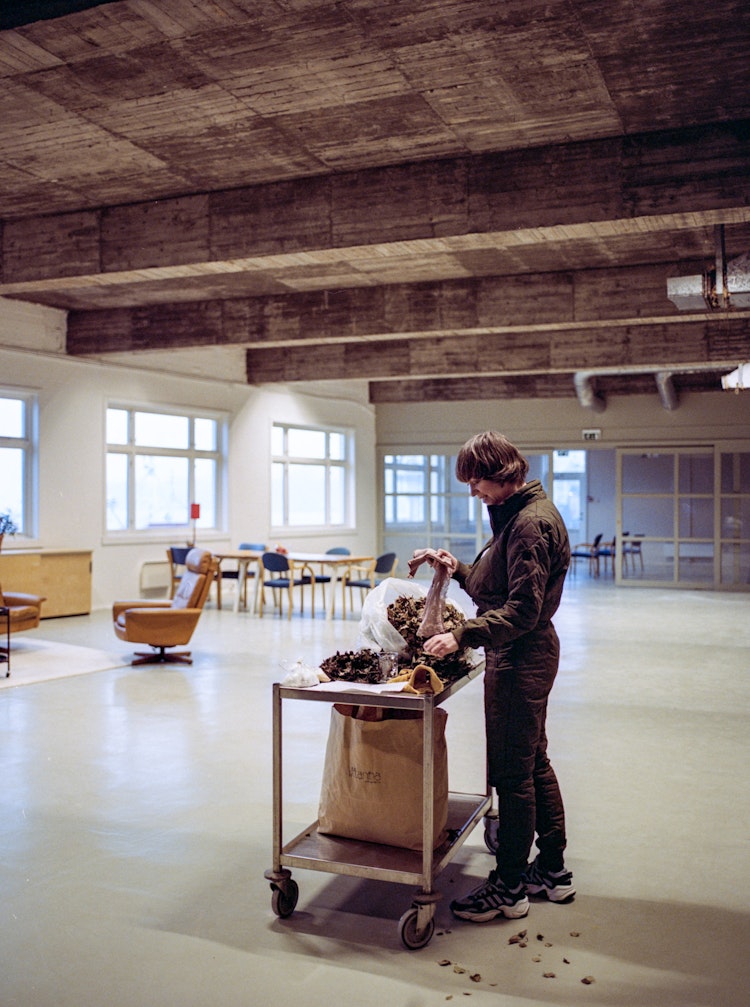
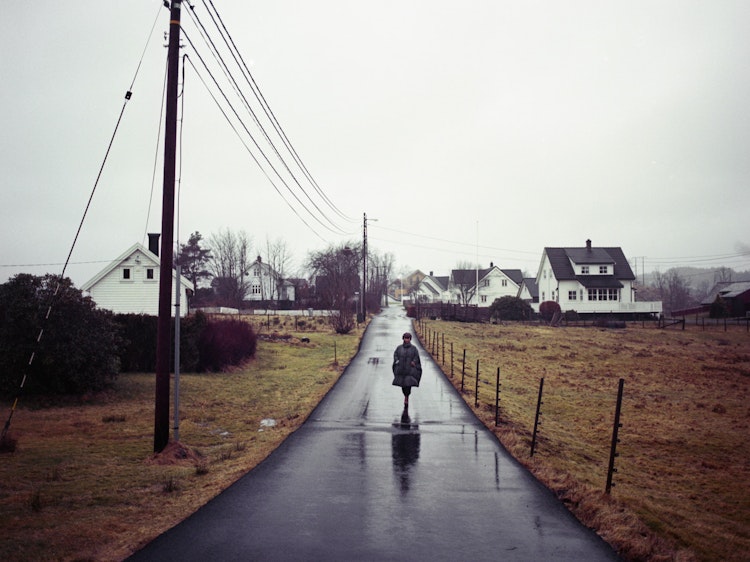
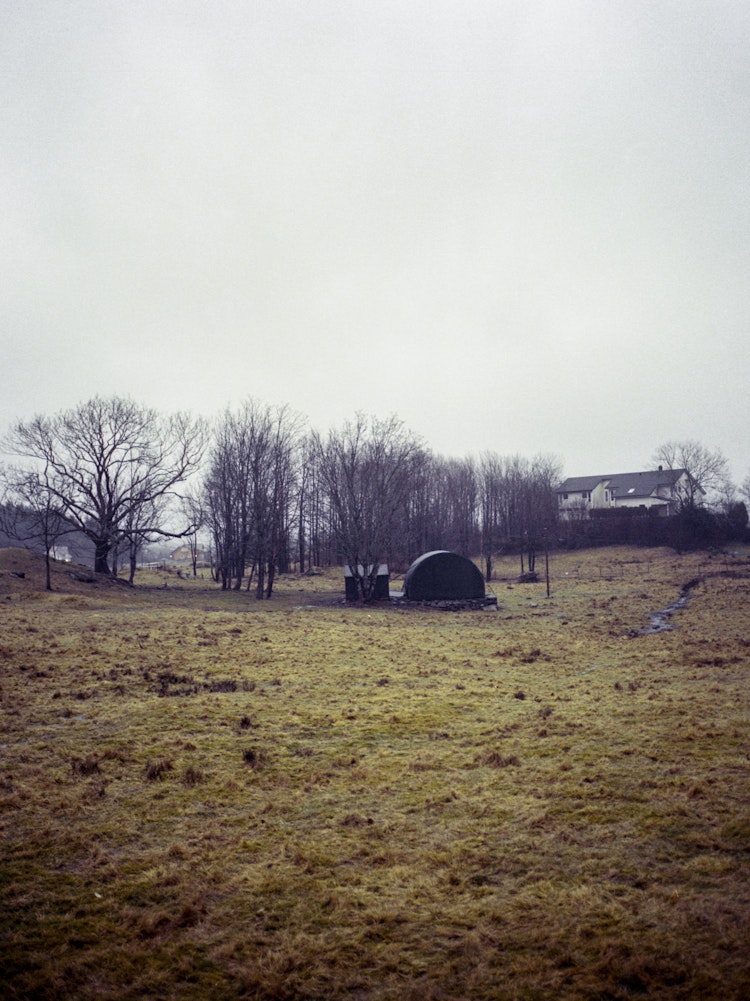
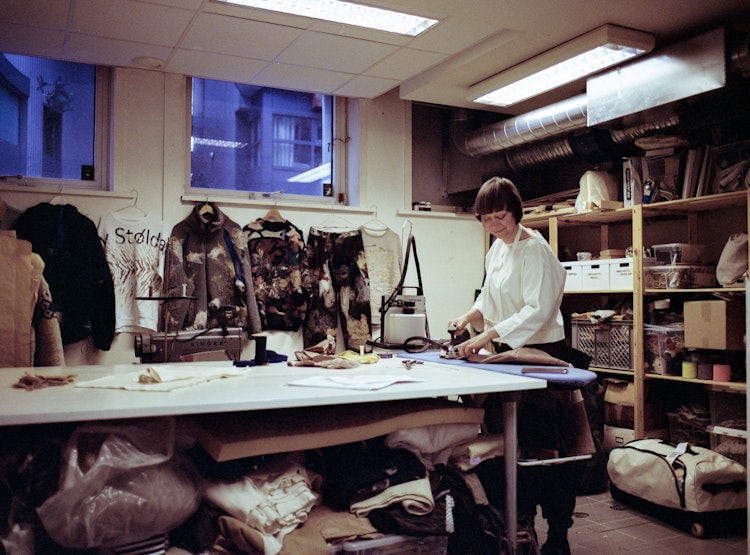
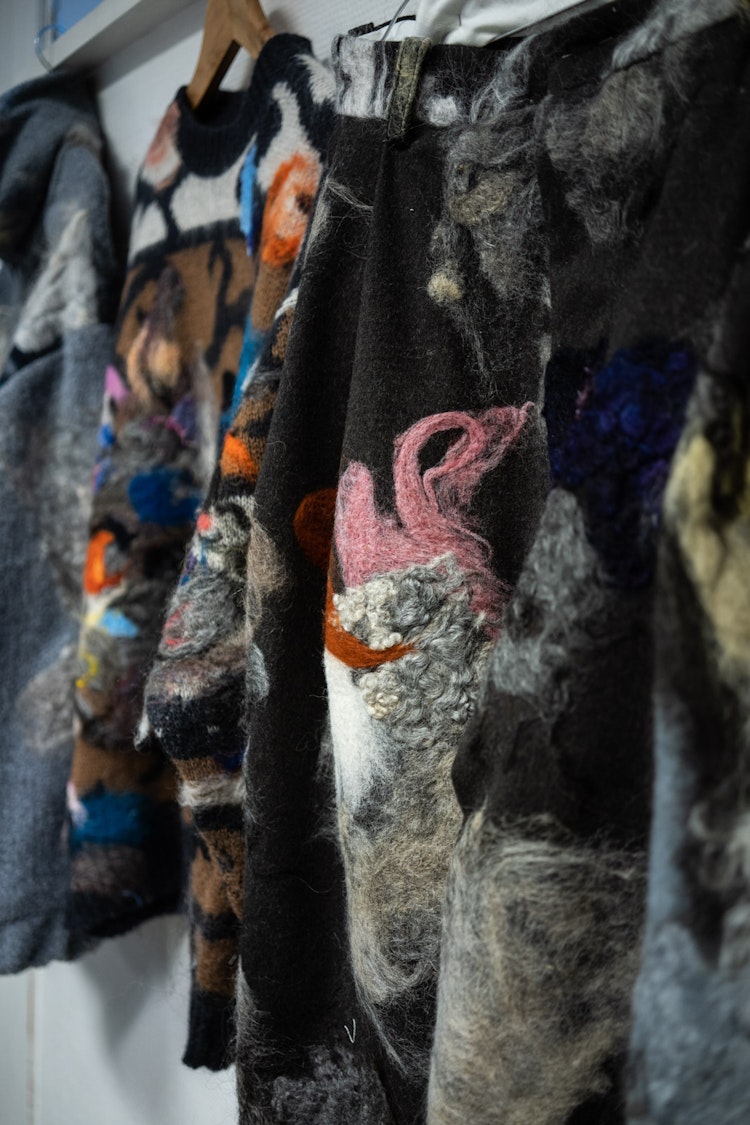
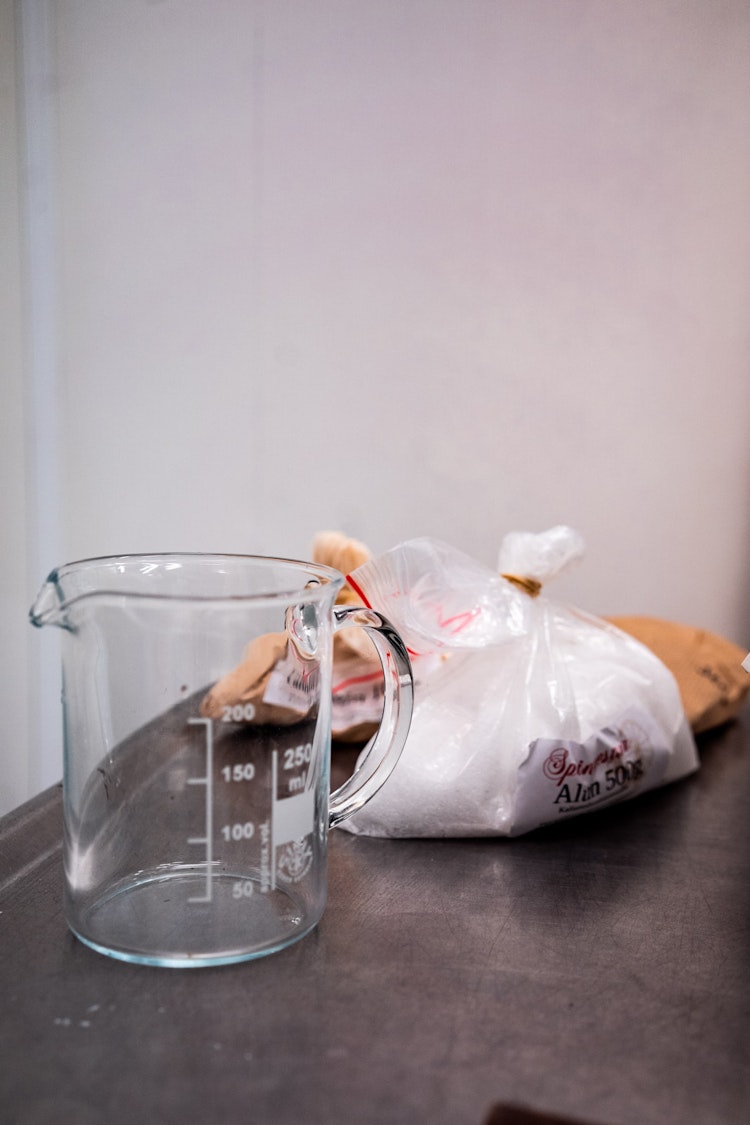
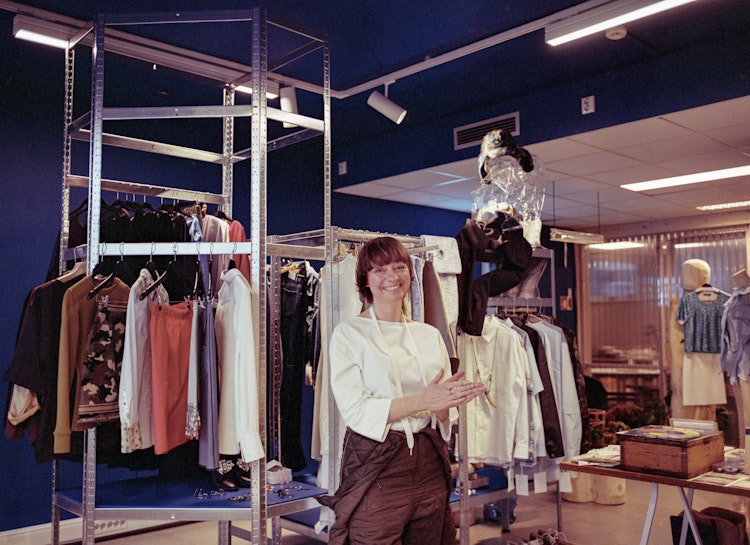
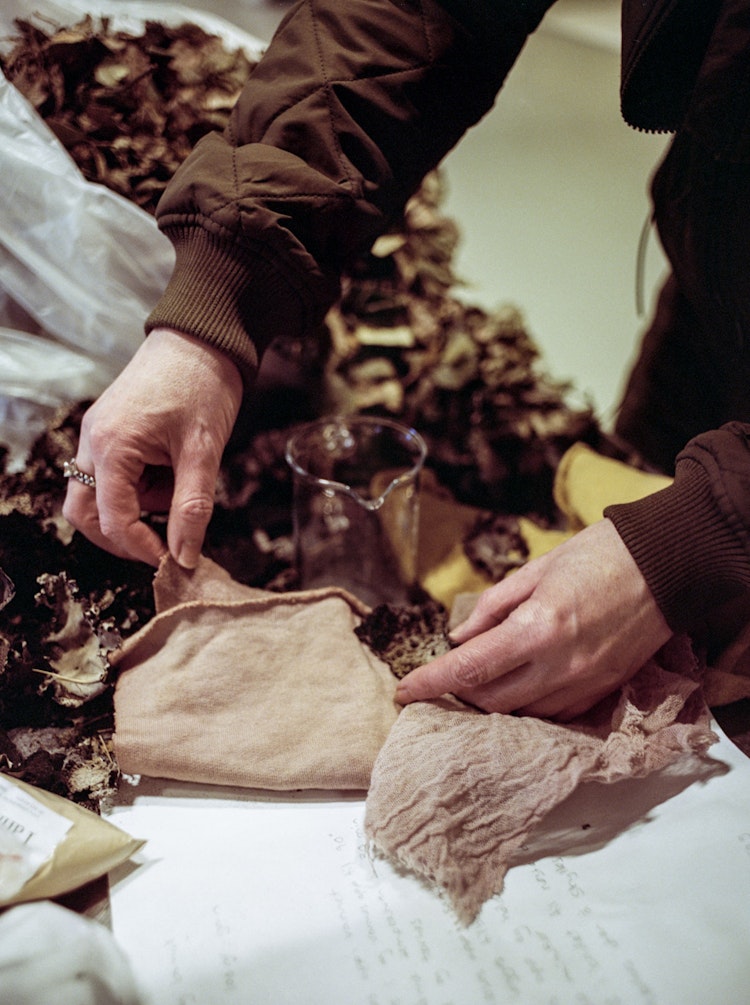
Moving Forward
Harald Lunde Helgesen began his design practice in London, after attending school in the UK. He eventually returned to his childhood home in Oslo to start and co-run the brand HAiKw/. A year and half ago, after ten years of running HAiKw/, Harald returned to school to earn a master’s degree in design and to change the direction of his practice. It was during this transition that he, along with myself, bought the small farm called Åsli in Brødbøl, Norway. The farm has become a shared dream, and we’re currently in the midst of a meticulously-planned five-year house and barn renovation – doing most everything ourselves. We both have grown to see more of a future for ourselves at the little house nestled in Finnskogen.
Harald’s master’s degree is centred around developing a place between theory and practice for his own professional future. He often speaks of the challenge of finding an intellectual/philosophical/analytical space within fashion such as exists in the fine arts and architecture. His project is focused on ‘slowing down and thinking a bit more’ in order to use his experience and knowledge in a way that does not feed the ‘fashion economy’. He is currently working with patterns he has designed to ‘use the pattern as information to create different physical objects’. He describes this work as a ‘new design way of being’ with a goal of defining the ‘non-commercial designer who does not have to abide by the rules of the craft organisations or the fine arts organisations – you fall between the chairs. But between the chairs is also a place – instead of trying to escape from between, you have to build a chair there.’
‘You need to make your life fit your ambition’ says Harald. ‘In the countryside, what I find amazing is there’s so much skill and craft around.’ At Åsli, we are surrounded by neighbours who are weavers, knitters, carpenters and metal workers. ‘I’m driven by meeting people – it seems like a place where I can have a practice that involves people, making, materials, knowledge [...] and then the theoretical – there’s a space there to actually read, study – you don’t have so much FOMO when you’re there.’ Quite often in the summer months, after working several morning hours in the garden, I'll come in for lunch to find him still in bed, reading eagerly about Japanese gardens or the anthropology of craftspeople. While he isn’t exactly sure what his practice will look like once he finishes his master’s degree, he is certain it will be a design practice that aims to look forward, towards a place between a theoretical and practical way of being. I'm excited to watch him find this place as we deepen our roots in the countryside.
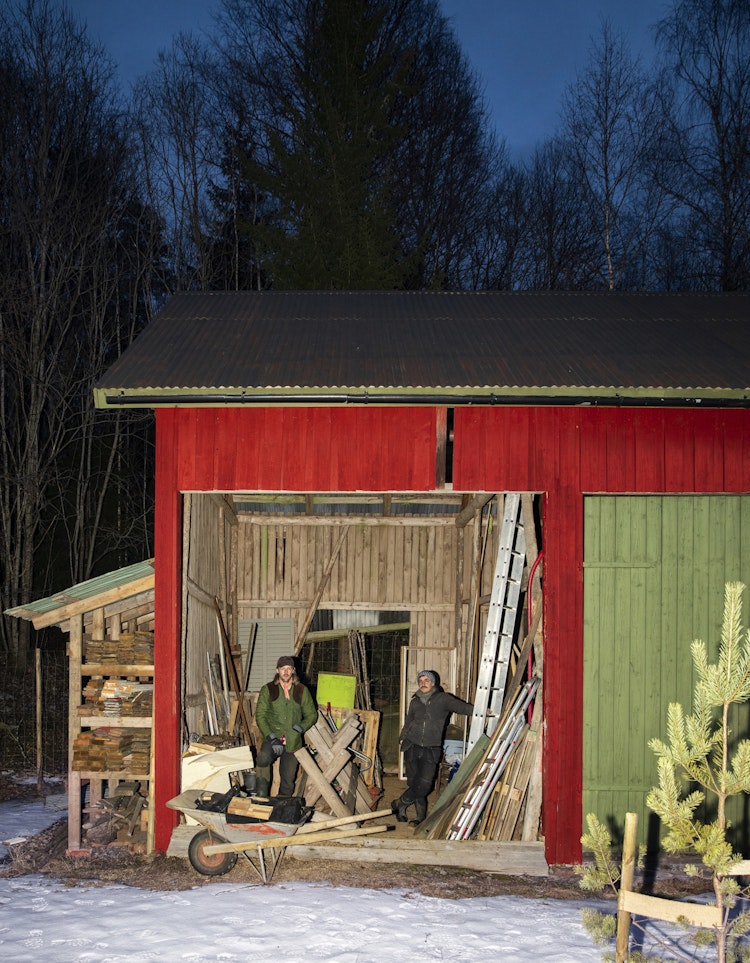
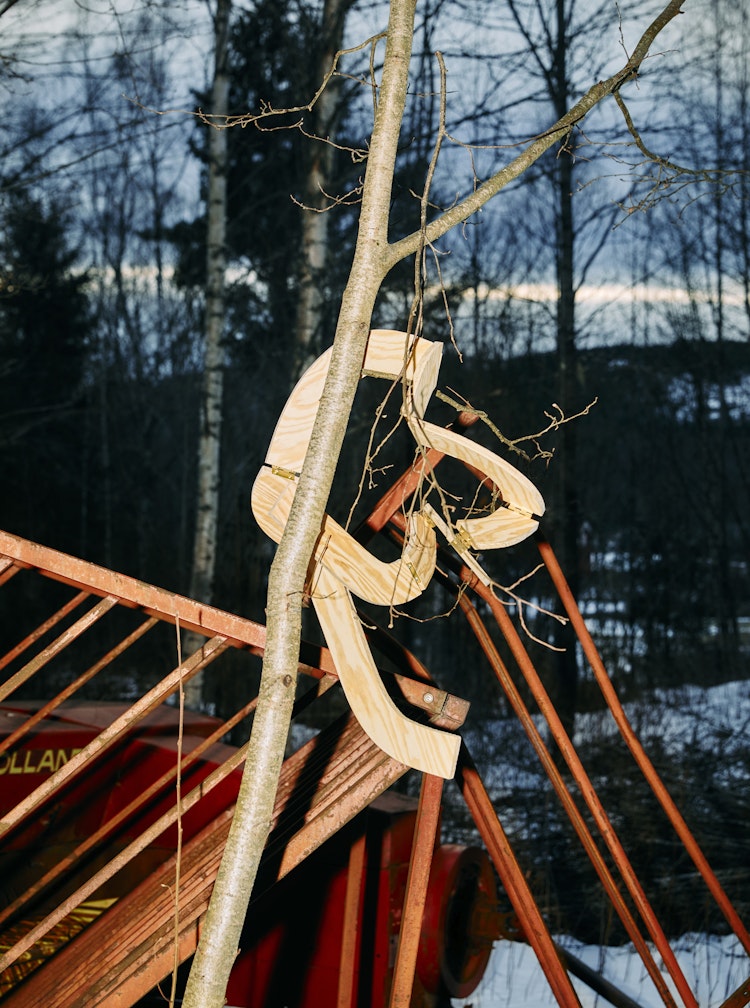
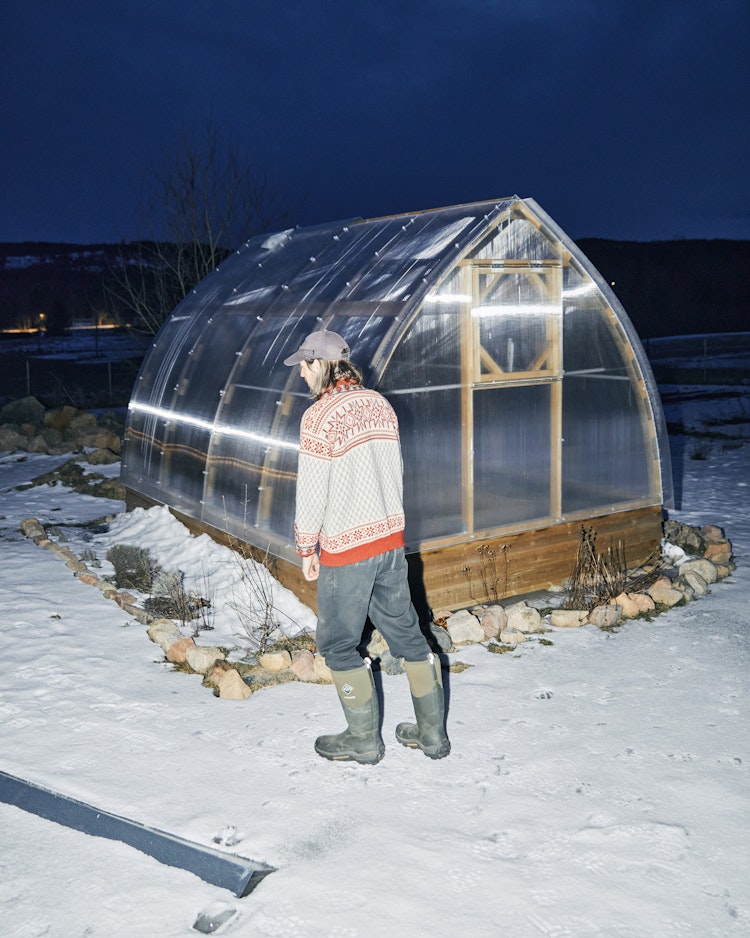
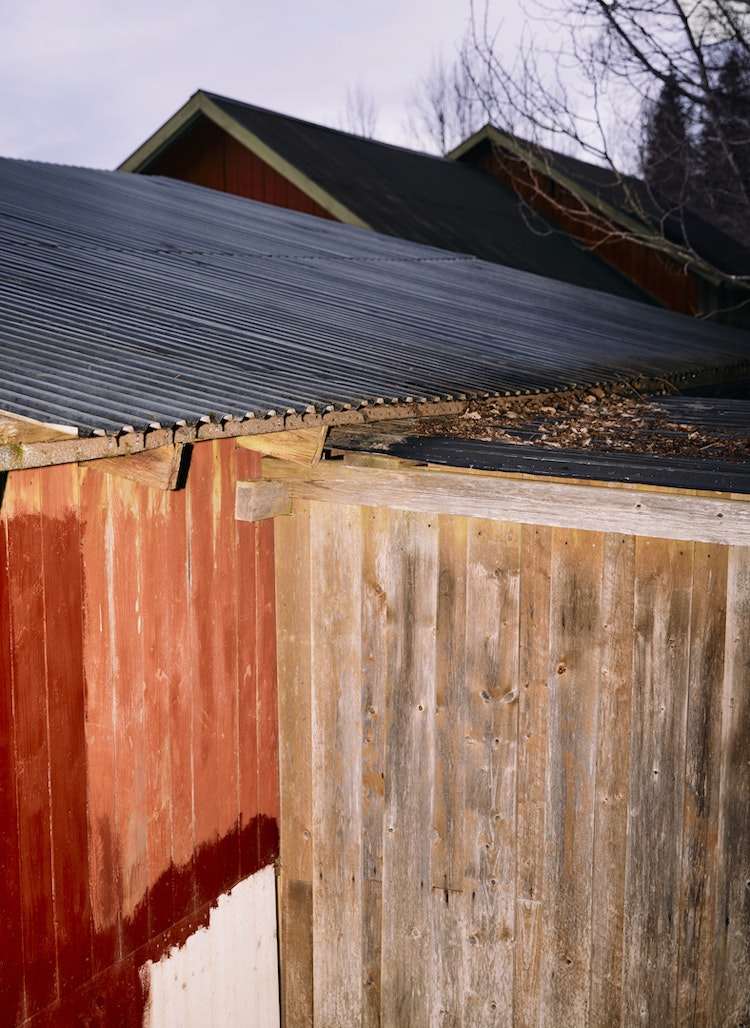
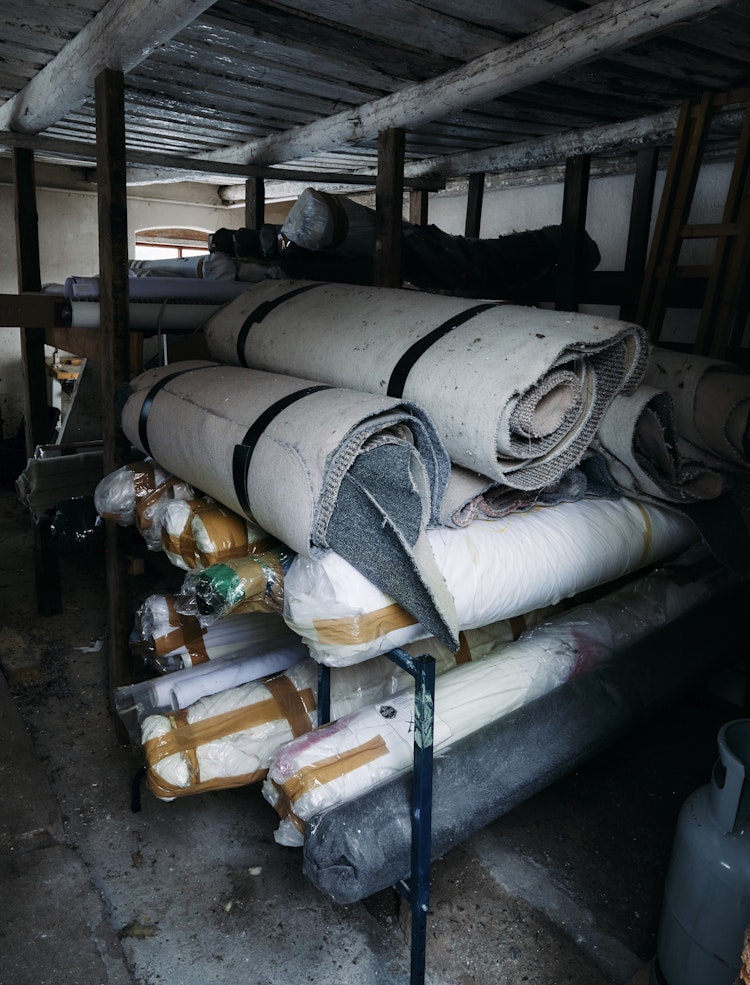

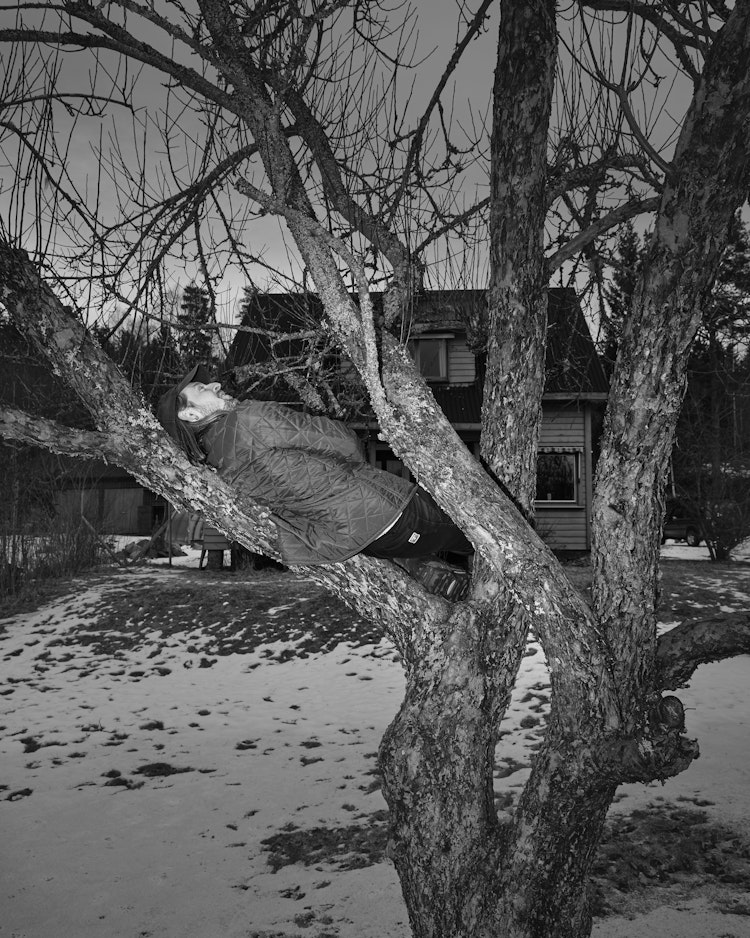
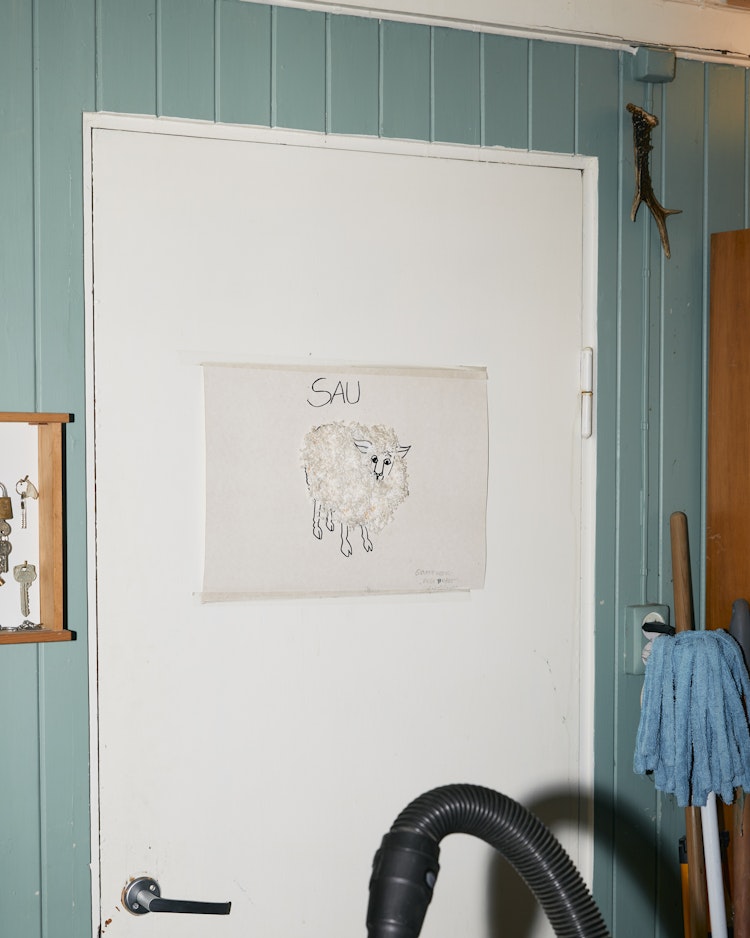
The romance of a pastoral lifestyle is heavily influenced by the idea of escape. Escape from the busy, noisy, commercial, constant push to produce. Yet, we see each of these designers also moving towards new ways of being and practicing. How will the abundance of space continue to impact their imagination? What new perspectives will they find in these unique places where they live? How will their practices develop as they embrace further their own heritage? What new communities and connections will emerge? And ultimately, will they find a new place in which to be, as both the how and why they design moves towards new landscapes?
Co-editor Ida Flack Øien and featured designer Harald Lunde Helgesen are former colleagues in the fashion brand Haik W/. Contributing writer Adam Curtis and Harald Lunde Helgesen are partners.